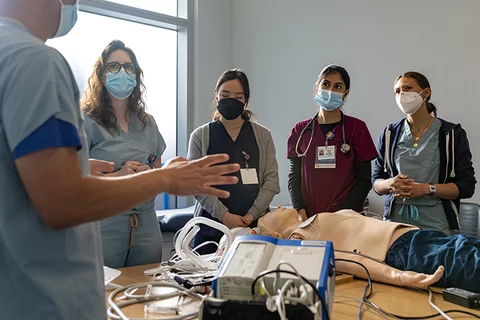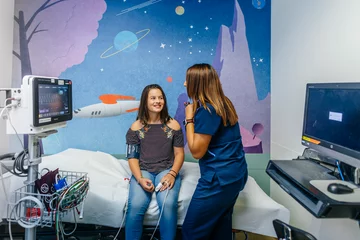How a Big Picture View Helps Med Students Master Related Biological Systems
The David Geffen School of Medicine at UCLA (DGSOM) uses a block curriculum to help students master a depth of medical knowledge. Director of the Iris Cantor-UCLA Women's Health Center and a former DGSOM curriculum chair, Janet Pregler, MD, explains the benefits of a block curriculum.
A Holistic Look at Biological Systems
The DGSOM curriculum groups related or interconnected biological systems in the same block to give students a big-picture look at human health. For example, an integrated organ-based curriculum helps students learn what the ovaries look like, what they do, how they work, and also how they interact with other organs and systems.
"We feel it is helpful to learn the histology and anatomy of each organ and system together, but especially for topics that are conceptually difficult such as biological chemistry and pharmacology. It is even more helpful to learn each as it relates to each organ system," says Dr. Pregler. "In college, you're probably used to learning subject-by-subject, so you might think we organize medical school the same way as a class in biology, a class in pharmacology [or] a class in anatomy," explains Dr. Pregler. "But we [don't] think that is the best way to teach medical students.
In a typical subject-based curriculum, you might learn the anatomy of an ovary in October in anatomy class, look at it under a microscope in December in a histology class, and in June, you might find out how it works in a biology or biochemistry class. Even later, you will learn separately what can go wrong with the ovary and what drugs are given for a diseased ovary."
Integrating Basic and Clinical Science Into the Medical School Curriculum
Working together as curriculum block chairs, usually one practicing physician and one research physician think creativity about all the elements of each organ group and system. The collaborators look beyond what the systems do separately, focusing on how they work together. "This way, we give our students the basic scientific and clinical information they need in a format that brings that information together for specific organ systems," explains Dr. Pregler.
“Thread” chairs work alongside the block chairs to integrate into the curriculum topics or “threads” that apply to every organ and system. Students complete nine curriculum blocks during their first and second years of medical school. The length of each block varies along with the complexity of the covered systems. During year one, students learn how the systems work. During the second year, students explore what happens when something goes wrong in each system. When they’ve completed all the blocks, students have a strong sense of each system and how they relate to each other.




